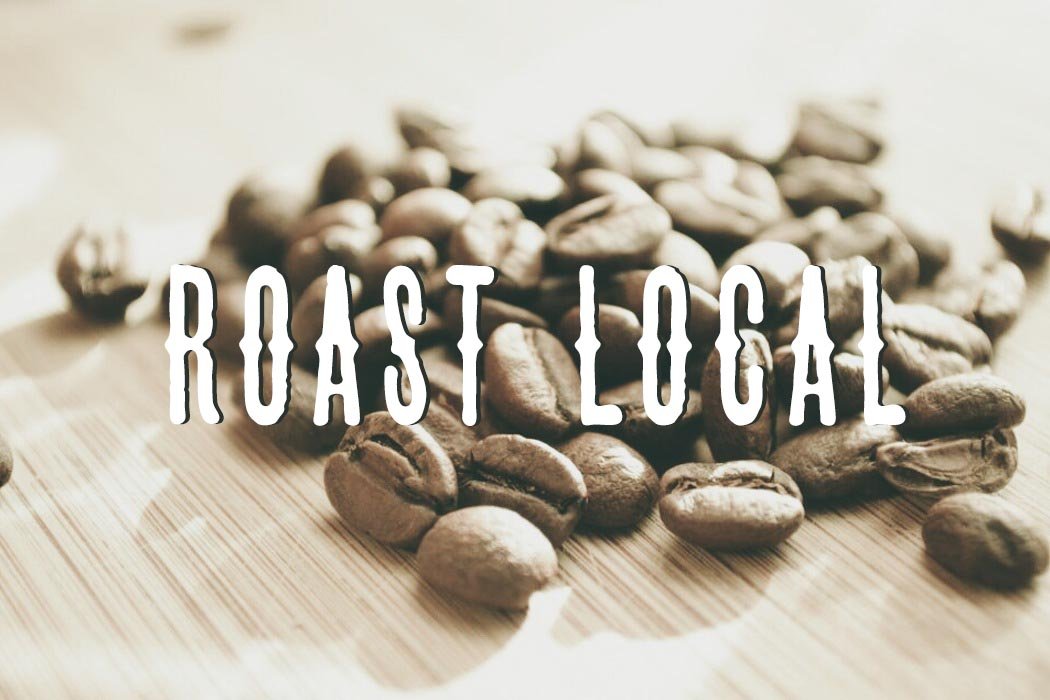SOE Single Origin Espresso – Celebrating Flavors from One Region
SOE Single Origin Espresso – Celebrating Flavors from One Region
Blog Article
Checking Out the Rich Tastes of Coffee Beans: a Deep Study Espresso and Blended Coffee Beans
When you explore the abundant flavors of coffee beans, you reveal an intricate world where each variety brings its very own character to your mug. As you browse through the art of espresso and the creative thinking behind mixed coffees, you'll begin to value the subtleties that make each sip unique.
The Beginnings of Coffee Beans: Checking Out Terroir and Flavor Profiles
When you take a sip of coffee, you're not just appreciating a beverage; you're experiencing a rich tapestry of flavors formed by the beans' beginnings. Each region produces special taste profiles influenced by elevation, climate, and dirt. For example, beans from Ethiopia commonly rupture with bright, fruity notes, while those from Colombia often tend to use a balanced, nutty sweet taste.
As you discover different origins, you'll notice exactly how terroir-- the ecological factors impacting a plant-- plays an important duty - Single Origin Espresso. The same coffee range can taste considerably different relying on where it's grown
When you think about these factors, you begin to value the complexity behind your cup. Each sip informs a tale of the land and the farmers who supported the beans. So, following time you delight, believe concerning the journey your coffee took before it reached your hands, and relish those intricate flavors that mirror its beginning.
Comprehending Coffee: The Art and Science Behind the Mixture
When you believe concerning espresso, it's not almost the strong flavor; it's also about the strategies that bring it to life. Recognizing just how various preparation methods influence preference can transform your brewing experience. Allow's discover the details of coffee prep work and uncover the distinct taste accounts that make each cup special.
Coffee Preparation Techniques
Coffee preparation is both an art and a science, incorporating specific methods with a deep understanding of coffee. To start, you'll intend to pick high-grade, fresh baked beans and grind them finely for perfect extraction (Single Origin Espresso). The work dimension is crucial; as well coarse, and your coffee will be weak, also great, and it'll be bitter
The result must be an abundant, velvety coffee with an attractive layer of crema on top. With method, you'll understand these methods.
Taste Profiles Explained
The world of espresso supplies a rich tapestry of flavor profiles that can raise your coffee experience. Light roasts frequently showcase brilliant level of acidity and dynamic flavors, while dark roasts present much deeper, bolder tones.
A well-crafted mix may harmonize the bright notes of an Ethiopian bean with the abundant, chocolatey touches of a Brazilian bean. Embrace the journey of uncovering coffee's diverse tastes, and you'll change your coffee ritual right into an amazing experience.
Processing Approaches: Exactly How They Influence Taste and Scent
While it may seem that the beginning of coffee beans is the most significant factor in establishing their flavor and aroma, the handling techniques utilized post-harvest play an equally vital function. You'll discover that these methods can considerably change the last taste profile of your cup.
For example, the washed process gets rid of the fruit from the beans prior to fermentation, frequently leading to a cleaner, brighter flavor. The all-natural process leaves the fruit undamaged throughout drying, resulting in a sweeter, fruitier account.
Other techniques, like honey handling, strike a balance, permitting some fruit mucilage to remain, giving a special intricacy.
Each processing method interacts with the beans' intrinsic characteristics, improving or silencing specific flavors and fragrances. So, when you sip that espresso or combined coffee, keep in mind that the journey from cherry to mug is influenced not just by origin yet also by just how those beans were processed.
Roasting Strategies: Opening the Full Prospective of Coffee Beans
Roasting techniques are necessary for disclosing the full capacity of coffee beans, as they change raw, green beans into the fragrant, savory coffee you delight in. The option of roasting technique-- light, tool, or dark-- considerably influences flavor accounts. Light roasts protect the beans' natural level of acidity and fruity notes, while medium roasts balance sweet taste and richness. Dark roasts, on the various other hand, emphasize vibrant, smoky tastes.
A slower roast at reduced temperature levels allows for intricate flavors to develop, while a quicker roast can increase anger. By understanding these techniques, you'll reveal a world of taste, boosting your coffee experience to new heights.
The Magic of Blended Coffee: Creating Unique Taste Experiences
Creating an unique flavor experience with blended coffee can transform your morning routine into an exploration of taste. By incorporating different beans from numerous regions, you can reveal a harmony of tastes that boost your mug to brand-new elevations. Each mix deals a distinct profile, balancing sweetness, body, and acidity to create something truly unique.
When you select a blend, you're not just choosing a coffee; you're picking a trip across varied landscapes and cultures. Explore various combinations enables you to uncover your personal faves, whether you enjoy fruity notes or rich, chocolatey touches.

Sampling Notes: Identifying the Nuances in Your Cup
As you drink your coffee, you may see a range of tastes dancing on your taste buds, each exposing the complexities of the beans. You may taste the intense acidity Get More Info evocative citrus or the deep, rich notes akin to dark delicious chocolate. The sweetness could stimulate honey or sugar, stabilizing the general profile wonderfully.
Focus on the body of the coffee-- does it feel ventilated and light, or is it complete and velvety? The coating, too, supplies clues; a sticking around aftertaste might hint at nuttiness or floral undertones.

Do not forget to discover the one-of-a-kind features of various origins, as each region imparts distinctive tastes - Single Origin Espresso. As an example, Ethiopian coffees usually existing fruity notes, while Colombian beans may showcase an extra spherical sweetness. By acknowledging these subtleties, you'll grow your gratitude for every cup, elevating your coffee experience to brand-new elevations

Developing Methods: Taking Full Advantage Of Flavor Removal for each Bean
When you discover the different brewing approaches, you'll discover that find more each strategy can dramatically affect the flavor account of your coffee. From French press to pour-over, each technique extracts various compounds, boosting or silencing particular notes. Using a French press allows oils to continue to be in the mixture, producing a richer taste, while pour-over stresses clearness and brightness.
Temperature level and grind dimension likewise play vital roles. A coarser grind functions best for cool brews, while a great grind is ideal for coffee. Trying out water temperature level-- between 195 ° F and 205 ° F-- can expose hidden flavors, also.
Don't ignore soaking time; a fast extraction can cause sour notes, while over-extraction might produce bitterness. By changing these variables, you can optimize taste extraction and absolutely elevate your coffee experience. Delight in the trip of finding what approach best fits your palate!
Often Asked Inquiries
What Is the Suitable Water Temperature Level for Developing Coffee?
The optimal water temperature level for brewing coffee's in between 195 ° F and 205 ° F. If you use water that's as well warm, you'll over-extract tastes; too chilly, and you will not draw out sufficient. Aim for that wonderful area for the ideal brew!
Just How Does Work Dimension Affect Coffee Flavor?
Grind size substantially affects coffee taste. Better grinds remove extra flavors and oils, leading to a bolder preference, while coarser grinds return a lighter flavor. Changing work dimension aids you attain your wanted coffee profile.
Exist Health Conveniences Surrounding Drinking Coffee?

What Is the Difference Between Arabica and Robusta Beans?
Arabica beans are smoother and sweeter, commonly including fruity tastes, while robusta beans are stronger with a bitter preference and higher caffeine content. You'll see these differences in fragrance and brewing experience.
Just How Can I Shop Coffee Beans for Quality?
To store coffee beans for freshness, keep them in an impermeable container, away from warmth, dampness, and light. You'll preserve their flavor longer if you just grind what you require right before brewing.
Exploring the Abundant Flavors of my link Coffee Beans: a Deep Dive Into Coffee and Blended Coffee Beans.
When you explore the abundant flavors of coffee beans, you reveal a complicated globe where each range brings its very own personality to your cup.When you take a sip of coffee, you're not simply delighting in a beverage; you're experiencing a rich tapestry of flavors formed by the beans' origins.Roasting methods are crucial for exposing the full possibility of coffee beans, as they transform raw, environment-friendly beans right into the aromatic, delicious coffee you delight in.As you drink your coffee, you may discover a range of tastes dancing on your palate, each disclosing the ins and outs of the beans.
Report this page